#raspberrypi
Explore tagged Tumblr posts
Text
TLV320DAC3100 first bops 🔊🎶💃🕺
OK, after many hours spent with Claude on writing a driver for the TLV320DAC3100 (https://www.digikey.com/en/products/detail/texas-instruments/TLV320DAC3100IRHBR/2260591), we finally have it configured using our driver, and playing an MP3 stream on this ESP32. This I2S DAC has a particularly complex PLL and audio-routing system, so it's not one where you can just pipe in I2S data and have it magically play. One nice thing we got working on is the MCLK, which is generated from the BCLK, so it'll work great with anything from an Arduino-compatible to a single-board computer like Raspberry Pi. We're hoping to get the headphone detection working next so that we can turn off the amp when the headphone is plugged in. Also, it should be able to control the volume from the headset buttons. Also, we want to get the internal beep generator going so we can make tones separate from the audio stream for UI notifications.
#tlv320dac3100#dac#esp32#i2s#audioengineering#opensource#mp3streaming#embeddedhardware#hardwarehacking#arduino#raspberrypi#microcontrollers#firmware#coding#electronics#headphones#pll#audioprocessing#dsp#mclk#bclk#headphonemod#techinnovation#audiophile#sounddesign#makercommunity#opensourcehardware#iot#embeddeddev#beepgenerator
36 notes
·
View notes
Text

Lesbians or whatever. Vee is very particular about following recipes and Sprout is absolutely not
#Raspberrypi#Raspberrypishipping#Bakingshow#vee x sprout#vee dw#vee dandys world#dandys world#crystals doodles
21 notes
·
View notes
Text
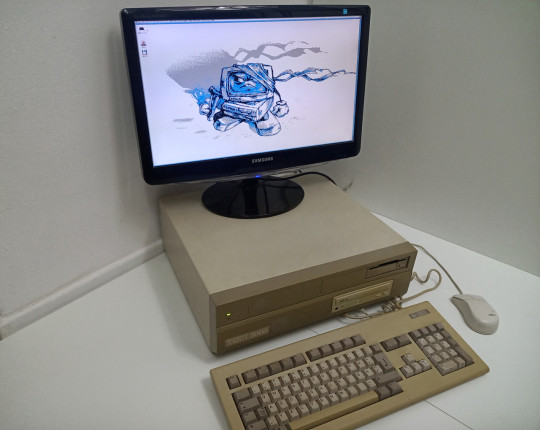


Amiga 2000 - Update to Emu68 v0.16-beta.2
158 notes
·
View notes
Text
DIY: Making A Pwnagotchi
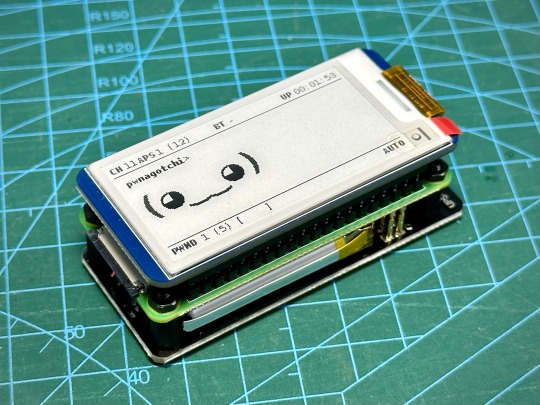

Yes, I know I am very late to the game ... LOL I was meddling with Flipper Zero and war driving, then I came across the Pwnagotchi project. Since I already had the parts to do this lying around in my workshop, I decided to put together my own Pwnagotchi just for fun. Started by hooking up the Waveshare 2.13" Black and White E-Ink Display to a Raspberry Pi running a fresh Raspbian image and downloaded the Waveshare demo code to test the display to make sure it's working properly, since I have not actually used it before. This is a v4 display.

After that, I just followed all the instructions over here to put it all together, including adding a real time clock. I used the DS3231 RTC module designed for Pi, but in order to make it fit into the space between the display and the Pi board, I had to make some modifications. The female header pins on the RTC module was desoldered and short wires were soldered on. The battery also had to be desoldered and resoldered on in a new positionlike below to make the module thin enough. The module was then wrapped in wire tape for insulation. Now, we can just slot the wires into the female header pin holes of the display before we snap it onto the Pi board.
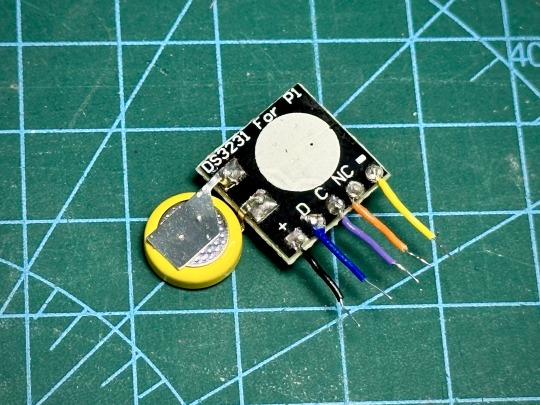
Below, you can see the RTC fits comfortably between the boards. I also attached a UPS Lite v1.2 board. Apparently, the UPS Lite board I had was a clone/knock off. It uses I2C address of 0x32 instead of 0x36 that was used in the original product, so the UPS Lite plugin in Pwnagotchi won't work. Oh well, I will just use it like a normal battery pack.

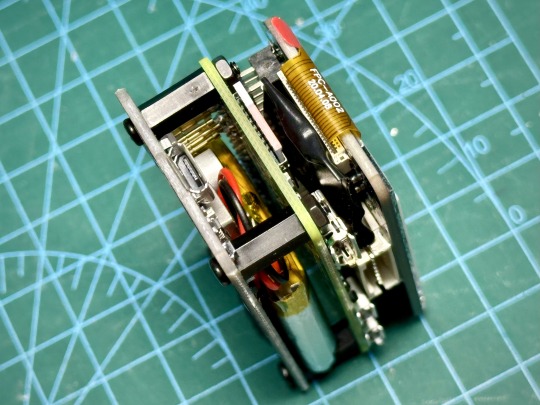
Now, for the software. The original Pwnagotchi project has not had any new updates for over 2 years, so it's kinda out of date and it doesn't support the newer Waveshare displays. Luckily for us, someone had taken the effort to fork the project and released new versions of Pwnagotchi over here. Note that this requires Raspberry Pi Zero 2 W.
The Waveshare 2.13" E-Ink display that I had was v4, but I found that I had to set the display type to "waveshare_3" in Pwnagotchi settings for it to work properly. Next is to 3D print a case for this, but in the mean time, I used some nano bricks to build a temporary case for it.
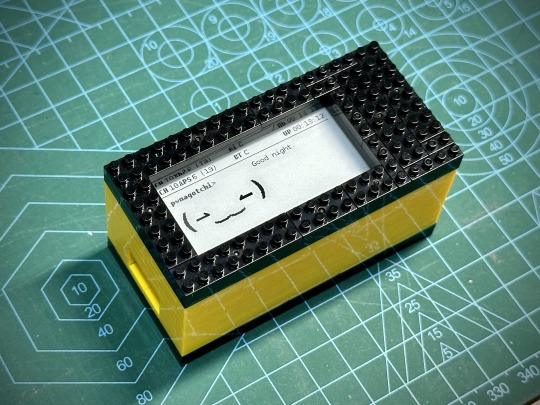
That's it for now. Happy hacking!
65 notes
·
View notes
Text
Psx indie games in CRT
I turned this broken PS1 into a retro mini PC for fun some time ago. It worked perfectly for playing the Twin Peaks demo by blueroseteamtp on a CRT. I really recommend it; the demo is excellent and is free in itchiogames . If you want the code or the 3D pieces, let me know. The ghostly Laura Palmer figurine from season 3 was made by kuato_toys
#arcade#arcadegame#retro#retrogaming#twinpeaks#twinpeaksgirls#davidlynch#lynch#psx#ps1#ps1games#hobby#playstation#play#crt#crtTV#crttvs#diy#diyproject#gamedev#gaming#gamingontiktok#gamingsetup#gamingvideos#unity#unity3d#gameengine#godot#godotengine#raspberrypi
7 notes
·
View notes
Text
Built your Raspberry Pi Kiwix Hotspot or have questions? Share your experiences or tips in the comments below! Let's learn together.
#DigitalDivide#DigitalEquity#diy wikipedia#DIYElectronics#DIYTech#EdTech#educational technology#InformationAccess#Kiwix#kiwix setup#KnowledgeForAll#offline internet#offline library#OfflineData#OfflineFirst#OfflineLearning#OpenSource#preparedness#prepper tech#PrepperTech#raspberry pi#raspberry pi kiwix hotspot#raspberry pi projects#RaspberryPi#TechGuide#TechProjects#zim files
2 notes
·
View notes
Text
Mastering Neural Networks: A Deep Dive into Combining Technologies
How Can Two Trained Neural Networks Be Combined?
Introduction
In the ever-evolving world of artificial intelligence (AI), neural networks have emerged as a cornerstone technology, driving advancements across various fields. But have you ever wondered how combining two trained neural networks can enhance their performance and capabilities? Let’s dive deep into the fascinating world of neural networks and explore how combining them can open new horizons in AI.
Basics of Neural Networks
What is a Neural Network?
Neural networks, inspired by the human brain, consist of interconnected nodes or "neurons" that work together to process and analyze data. These networks can identify patterns, recognize images, understand speech, and even generate human-like text. Think of them as a complex web of connections where each neuron contributes to the overall decision-making process.
How Neural Networks Work
Neural networks function by receiving inputs, processing them through hidden layers, and producing outputs. They learn from data by adjusting the weights of connections between neurons, thus improving their ability to predict or classify new data. Imagine a neural network as a black box that continuously refines its understanding based on the information it processes.
Types of Neural Networks
From simple feedforward networks to complex convolutional and recurrent networks, neural networks come in various forms, each designed for specific tasks. Feedforward networks are great for straightforward tasks, while convolutional neural networks (CNNs) excel in image recognition, and recurrent neural networks (RNNs) are ideal for sequential data like text or speech.
Why Combine Neural Networks?
Advantages of Combining Neural Networks
Combining neural networks can significantly enhance their performance, accuracy, and generalization capabilities. By leveraging the strengths of different networks, we can create a more robust and versatile model. Think of it as assembling a team where each member brings unique skills to tackle complex problems.
Applications in Real-World Scenarios
In real-world applications, combining neural networks can lead to breakthroughs in fields like healthcare, finance, and autonomous systems. For example, in medical diagnostics, combining networks can improve the accuracy of disease detection, while in finance, it can enhance the prediction of stock market trends.
Methods of Combining Neural Networks
Ensemble Learning
Ensemble learning involves training multiple neural networks and combining their predictions to improve accuracy. This approach reduces the risk of overfitting and enhances the model's generalization capabilities.
Bagging
Bagging, or Bootstrap Aggregating, trains multiple versions of a model on different subsets of the data and combines their predictions. This method is simple yet effective in reducing variance and improving model stability.
Boosting
Boosting focuses on training sequential models, where each model attempts to correct the errors of its predecessor. This iterative process leads to a powerful combined model that performs well even on difficult tasks.
Stacking
Stacking involves training multiple models and using a "meta-learner" to combine their outputs. This technique leverages the strengths of different models, resulting in superior overall performance.
Transfer Learning
Transfer learning is a method where a pre-trained neural network is fine-tuned on a new task. This approach is particularly useful when data is scarce, allowing us to leverage the knowledge acquired from previous tasks.
Concept of Transfer Learning
In transfer learning, a model trained on a large dataset is adapted to a smaller, related task. For instance, a model trained on millions of images can be fine-tuned to recognize specific objects in a new dataset.
How to Implement Transfer Learning
To implement transfer learning, we start with a pretrained model, freeze some layers to retain their knowledge, and fine-tune the remaining layers on the new task. This method saves time and computational resources while achieving impressive results.
Advantages of Transfer Learning
Transfer learning enables quicker training times and improved performance, especially when dealing with limited data. It’s like standing on the shoulders of giants, leveraging the vast knowledge accumulated from previous tasks.
Neural Network Fusion
Neural network fusion involves merging multiple networks into a single, unified model. This method combines the strengths of different architectures to create a more powerful and versatile network.
Definition of Neural Network Fusion
Neural network fusion integrates different networks at various stages, such as combining their outputs or merging their internal layers. This approach can enhance the model's ability to handle diverse tasks and data types.
Types of Neural Network Fusion
There are several types of neural network fusion, including early fusion, where networks are combined at the input level, and late fusion, where their outputs are merged. Each type has its own advantages depending on the task at hand.
Implementing Fusion Techniques
To implement neural network fusion, we can combine the outputs of different networks using techniques like averaging, weighted voting, or more sophisticated methods like learning a fusion model. The choice of technique depends on the specific requirements of the task.
Cascade Network
Cascade networks involve feeding the output of one neural network as input to another. This approach creates a layered structure where each network focuses on different aspects of the task.
What is a Cascade Network?
A cascade network is a hierarchical structure where multiple networks are connected in series. Each network refines the outputs of the previous one, leading to progressively better performance.
Advantages and Applications of Cascade Networks
Cascade networks are particularly useful in complex tasks where different stages of processing are required. For example, in image processing, a cascade network can progressively enhance image quality, leading to more accurate recognition.
Practical Examples
Image Recognition
In image recognition, combining CNNs with ensemble methods can improve accuracy and robustness. For instance, a network trained on general image data can be combined with a network fine-tuned for specific object recognition, leading to superior performance.
Natural Language Processing
In natural language processing (NLP), combining RNNs with transfer learning can enhance the understanding of text. A pre-trained language model can be fine-tuned for specific tasks like sentiment analysis or text generation, resulting in more accurate and nuanced outputs.
Predictive Analytics
In predictive analytics, combining different types of networks can improve the accuracy of predictions. For example, a network trained on historical data can be combined with a network that analyzes real-time data, leading to more accurate forecasts.
Challenges and Solutions
Technical Challenges
Combining neural networks can be technically challenging, requiring careful tuning and integration. Ensuring compatibility between different networks and avoiding overfitting are critical considerations.
Data Challenges
Data-related challenges include ensuring the availability of diverse and high-quality data for training. Managing data complexity and avoiding biases are essential for achieving accurate and reliable results.
Possible Solutions
To overcome these challenges, it’s crucial to adopt a systematic approach to model integration, including careful preprocessing of data and rigorous validation of models. Utilizing advanced tools and frameworks can also facilitate the process.
Tools and Frameworks
Popular Tools for Combining Neural Networks
Tools like TensorFlow, PyTorch, and Keras provide extensive support for combining neural networks. These platforms offer a wide range of functionalities and ease of use, making them ideal for both beginners and experts.
Frameworks to Use
Frameworks like Scikit-learn, Apache MXNet, and Microsoft Cognitive Toolkit offer specialized support for ensemble learning, transfer learning, and neural network fusion. These frameworks provide robust tools for developing and deploying combined neural network models.
Future of Combining Neural Networks
Emerging Trends
Emerging trends in combining neural networks include the use of advanced ensemble techniques, the integration of neural networks with other AI models, and the development of more sophisticated fusion methods.
Potential Developments
Future developments may include the creation of more powerful and efficient neural network architectures, enhanced transfer learning techniques, and the integration of neural networks with other technologies like quantum computing.
Case Studies
Successful Examples in Industry
In healthcare, combining neural networks has led to significant improvements in disease diagnosis and treatment recommendations. For example, combining CNNs with RNNs has enhanced the accuracy of medical image analysis and patient monitoring.
Lessons Learned from Case Studies
Key lessons from successful case studies include the importance of data quality, the need for careful model tuning, and the benefits of leveraging diverse neural network architectures to address complex problems.
Online Course
I have came across over many online courses. But finally found something very great platform to save your time and money.
1.Prag Robotics_ TBridge
2.Coursera
Best Practices
Strategies for Effective Combination
Effective strategies for combining neural networks include using ensemble methods to enhance performance, leveraging transfer learning to save time and resources, and adopting a systematic approach to model integration.
Avoiding Common Pitfalls
Common pitfalls to avoid include overfitting, ignoring data quality, and underestimating the complexity of model integration. By being aware of these challenges, we can develop more robust and effective combined neural network models.
Conclusion
Combining two trained neural networks can significantly enhance their capabilities, leading to more accurate and versatile AI models. Whether through ensemble learning, transfer learning, or neural network fusion, the potential benefits are immense. By adopting the right strategies and tools, we can unlock new possibilities in AI and drive advancements across various fields.
FAQs
What is the easiest method to combine neural networks?
The easiest method is ensemble learning, where multiple models are combined to improve performance and accuracy.
Can different types of neural networks be combined?
Yes, different types of neural networks, such as CNNs and RNNs, can be combined to leverage their unique strengths.
What are the typical challenges in combining neural networks?
Challenges include technical integration, data quality, and avoiding overfitting. Careful planning and validation are essential.
How does combining neural networks enhance performance?
Combining neural networks enhances performance by leveraging diverse models, reducing errors, and improving generalization.
Is combining neural networks beneficial for small datasets?
Yes, combining neural networks can be beneficial for small datasets, especially when using techniques like transfer learning to leverage knowledge from larger datasets.
#artificialintelligence#coding#raspberrypi#iot#stem#programming#science#arduinoproject#engineer#electricalengineering#robotic#robotica#machinelearning#electrical#diy#arduinouno#education#manufacturing#stemeducation#robotics#robot#technology#engineering#robots#arduino#electronics#automation#tech#innovation#ai
4 notes
·
View notes
Text
Essential Electronic Items for IoT and Electronics Enthusiasts
Are you diving into the world of Internet of Things (IoT) and electronics? Whether you are a seasoned engineer or simply beginning out, having a stable list of essential components is key to bringing your initiatives to existence. Here’s a curated list of electronic objects that each maker and tech enthusiast ought to have of their toolkit:
1. Microcontrollers
Arduino Uno: Great for novices and versatile for diverse projects.
Raspberry Pi: Ideal for more complex duties and going for walks complete operating structures.
ESP8266/ESP32: Perfect for wireless communication and IoT projects.
2. Sensors
DHT22: For temperature and humidity readings.
PIR Sensor: Useful for movement detection.
Ultrasonic Distance Sensor: Measures distances with high accuracy.
3. Actuators
Servo Motors: For unique manage in robotics and mechanical structures.
Stepper Motors: Ideal for applications requiring particular movement.
Solenoids: Good for growing mechanical actions and locks.
4. Displays
LCD Display: Useful for showing records and debugging.
OLED Display: Compact and clean for exact photographs and texts.
5. Connectivity Modules
Bluetooth Module (HC-05/HC-06): For short-range wi-fi communication.
Wi-Fi Module (ESP8266): Connects gadgets to the internet.
GSM Module: Enables verbal exchange over mobile networks.
6. Power Supplies
Battery Packs: Various types for transportable electricity.
Voltage Regulators: Ensure solid voltage ranges in your circuits.
Power Banks: Handy for charging and powering devices on the move.
7. Prototyping Tools
Breadboards: Essential for prototyping with out soldering.
Jumper Wires: For making connections on breadboards.
Soldering Kit: For everlasting connections and circuit meeting.
eight. Additional Components
Resistors, Capacitors, and Diodes: Fundamental for circuit design and stability.
Transistors: Key for switching and amplification tasks.
Connectors and Switches: For interfacing and controlling circuits.
By preserving these objects handy, you'll be nicely-prepared to address a huge range of IoT and electronics projects. Whether you're constructing smart domestic devices, wearable tech, or computerized structures, having the right additives can make all the difference.
#IoT#Electronics#Arduino#RaspberryPi#ESP32#Sensors#Actuators#Displays#ConnectivityModules#PowerSupplies#Prototyping#Tech#DIY#Makers#Engineering#ElectronicComponents#TechProjects
2 notes
·
View notes
Text
2 notes
·
View notes
Text

Meet the puppets of "Circuit Playground"! 🤖🎭
Explore the fundamentals of electronics with "Circuit Playground," a video series by Adafruit. Each episode delves into the components and principles that make circuits function - beeping, blinking, and more. Ideal for beginners and enthusiasts eager to understand what makes circuits tick - great for engineers to watch with their kiddos -
https://youtube.com/playlist?list=PLjF7R1fz_OOXWHQhEVEI5Jqf18TQRr5Hu
#circuitplayground#adafruit#electronics#stem#engineering#techfun#learnbydoing#electronicsforkids#makers#techeducation#blinkinglights#beeping#robotics#arduino#raspberrypi#kidfriendly#sciencefun#handsonlearning#makerspace#tinkering#educationalvideos#techenthusiast#futureengineer#familyfun#puppets#techmagic#innovation#creativelearning#diyelectronics#geekyfun
25 notes
·
View notes
Text

#toyphotography#arduinoproject#actionfigures#gundam#autobots#robotart#robotsindisguise#hasbro#coding#cyberpunk#digitalart#diy#engineer#sciencefiction#drawing#illustration#raspberrypi#maker#omgrobots#g#frc#arduinouno#mech#decepticons#robotsofinstagram#optimusprime#gaming#firstrobotics#toystagram#space
4 notes
·
View notes
Text
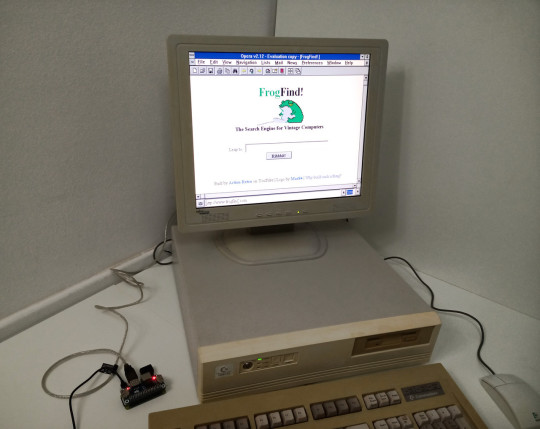
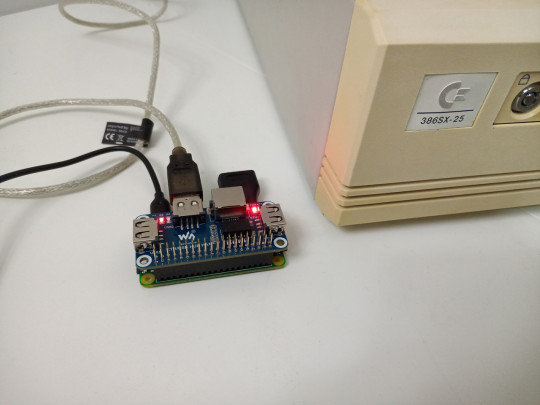
Commodore 386SX-25 online
67 notes
·
View notes
Text
Parts For Upcoming Build
Just received the main components for my next build ... Haha ... Any guesses?
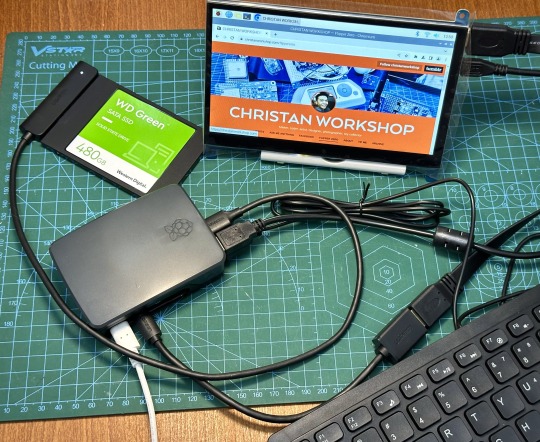
4 notes
·
View notes
Text
instagram
Click here for my music on Spotifiy: Here We Go I can Start Everything All Over Again Now by Alvin Skyhype
Check out the full album: Objects Appear Closer Than They Are
Follow me on Instagram Facebook Spotify Bandcamp Soundcloud Youtube +++ rainbowclash.com +++
#raspberrypi3#joystick#8bit#cables#fail#photo#photography#rainbowclash#retro#retrogame#raspberrypi#raspberry#Instagram
5 notes
·
View notes
Text
Rotary Encoder - LED Array & Touch LCD for ESP32/Pico/HAT @raspberrypi @EspressifSystems @kickstarter @SBComponentsLtd
Open-Source, Easily glide through menus, adjust settings, and control parameters with unmatched precision

Introducing Rotary Encoder build with 32 RGB LED Array and amazing 1.28" Round Touch LCD and how can we forget GPIO’s breakout to explore its features and also an intuitive user interface and stunning visual effects. Compatible with LVGL (https://lvgl.io/), the most popular free and open-source embedded graphics library, Rotary empowers users to create beautiful and customized UIs for any MCU, MPU, and display type. This compatibility allows for limitless design possibilities and enables users to tailor the user interface of their Rotary to their specific needs.
The best part is Rotary is built for every electronic community from Espressif (ESP) to Raspberry Pi Pico to Raspberry Pi Boards. so whether you are ESP fan, Pico Fan or using Raspberry Pi Board, Rotary build for you. With the Rotary Encoder, you can easily navigate menus, adjust settings, and control parameters with precision. The 32 RGB LED Array adds a vibrant and customizable circular display, allowing you to create captivating visual effects and animations. The 1.28" Round Touch LCD provides a user-friendly interface, enabling seamless interaction and real-time feedback.
youtube
The GPIO breakout expands the capabilities of the device, allowing you to connect additional sensors, actuators, and peripherals. This opens up a world of possibilities for your projects, from home automation and IoT applications to interactive installations and creative displays. Join us today and be among the first to experience the Rotary Encoder Touch LCD. Pledge now and secure your spot in this revolutionary journey. Thank you for your support!
Visit Official Page — https://www.kickstarter.com/projects/arushi/rotary-vibrant-visuals-and-seamless-interaction/
2 notes
·
View notes
Text
Made some tiktoks with a customizable 3 button keyboard.
Enjoy this smash cut of them all.
2 notes
·
View notes